White Tara Thangka
This exquisite White Tara Thangka measures 28 cm x 37 cm, showcasing the profound spiritual and artistic heritage of Tibetan Buddhism. Depicting the compassionate and benevolent female Bodhisattva of Longevity, White Tara, this thangka embodies the power of compassion and the promise of long life.
Symbolism and Significance
White Tara, also known as Tara the Liberator, is revered for her ability to swiftly alleviate suffering and bring about positive change. Her white complexion symbolizes purity, clarity, and liberation from suffering. She is often depicted seated in lotus position on a moon disk, representing her connection to the pure and enlightened mind.
In her right hand, she holds a white lotus flower, symbolizing purity and spiritual blossoming. In her left hand, she holds a stem of a blue lotus flower, representing compassion and the power to alleviate suffering. Her seven eyes, three on her face and one each on her palms and soles, symbolize her omniscience and ability to perceive the suffering of all beings. Her crown of five skulls symbolizes her triumph over five negative emotions: attachment, aversion, ignorance, pride, and jealousy.
Benefits of Displaying White Tara Thangkas in Your Home and While Meditating
-
Increased Compassion and Serenity: The presence of White Tara’s image can cultivate feelings of compassion, empathy, and inner peace within those who view it. Viewing her serene expression and gentle demeanor can help to calm the mind and promote a sense of inner tranquility.
-
Improved Health and Well-being: White Tara is associated with healing and longevity, and her image is believed to radiate positive energy that can promote physical and mental well-being. By displaying her thangka, you may find that you experience reduced stress, improved sleep, and an overall sense of well-being.
-
Protection from Negative Energies: White Tara is revered as a protector of all beings, and her image is believed to safeguard one from negative energies, misfortune, and accidents. By placing her thangka in your home, you may feel a sense of protection from negative forces and a greater sense of security.
-
Enhanced Meditation Practice: White Tara is a popular subject of meditation for many Buddhists, and her image can be used as a focal point for meditation practice. By focusing on her image, you may find that you are able to connect with her compassionate energy and attain deeper levels of mindfulness and inner peace.
-
Transformation and Personal Growth: White Tara is a symbol of transformation and personal growth, and her image can inspire you to make positive changes in your life. By contemplating her image, you may be reminded of your innate potential for wisdom, compassion, and achieving enlightenment.
Hanging Your White Tara Thangka
It is recommended to hang your White Tara Thangka in a clean, well-lit space where it will not be subjected to direct sunlight or moisture. You may hang it on the wall or place it on a stand or altar.
Preparation for Meditation
Before meditating with your White Tara Thangka, it is important to set the right intention and create a calm and peaceful environment. You may light incense, play calming music, or simply sit comfortably in a quiet place.
Once you are settled, gaze upon the image of White Tara and focus on her serene expression and compassionate gaze. Allow her image to fill your mind and heart with feelings of peace, serenity, and compassion.
As you meditate, you may repeat a mantra or prayer dedicated to White Tara. A simple mantra is “Om Tare Tuttare Ture Soha,” which means “Hail to Tara, who liberates all beings from suffering.”
Displaying a White Tara Thangka in your home and using it as a focal point for meditation can bring about a multitude of blessings and benefits. It can cultivate feelings of compassion, enhance well-being, and promote personal growth. It can also serve as a reminder of the power of compassion, the importance of personal growth, and the possibility of attaining enlightenment.
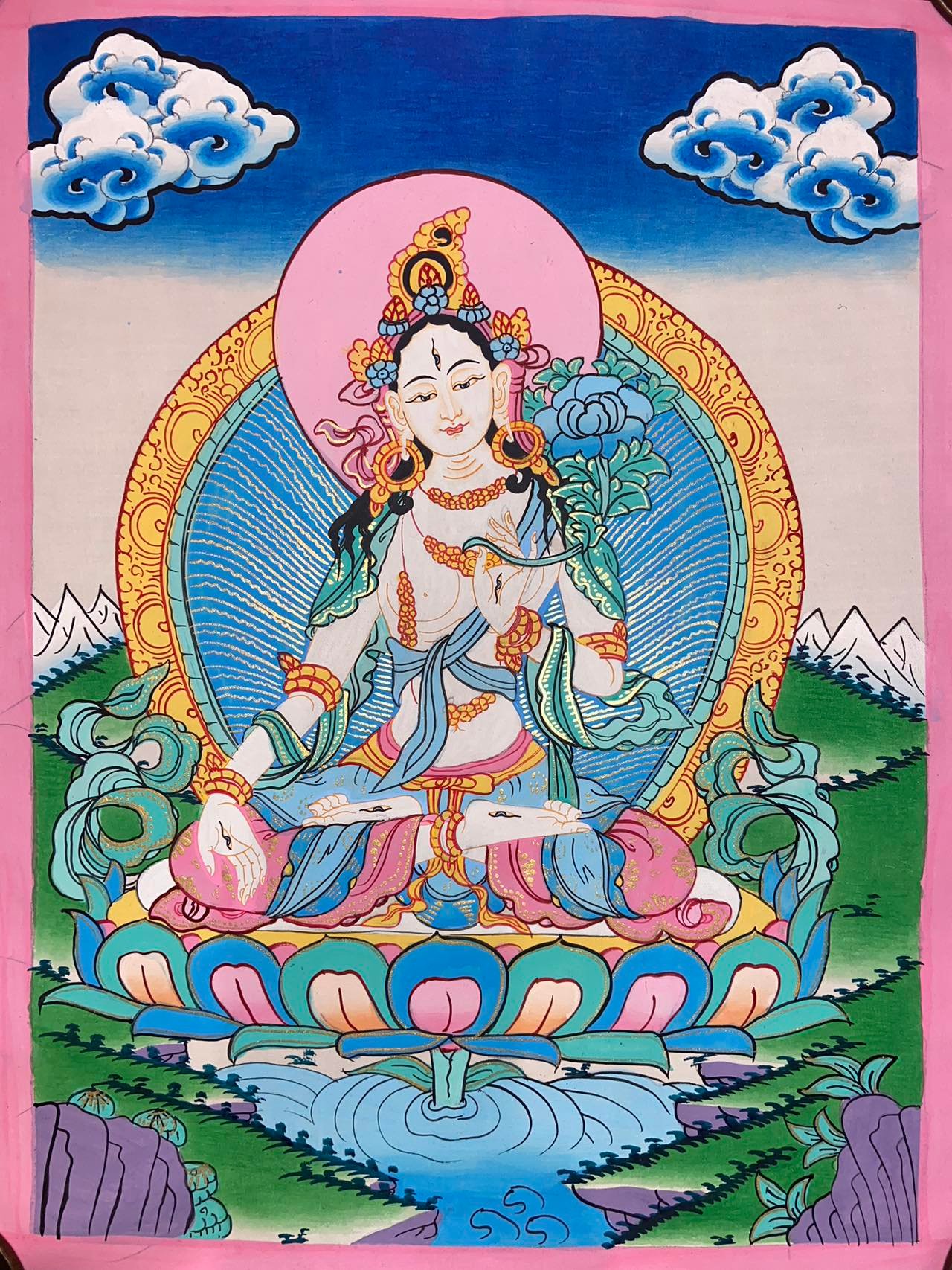

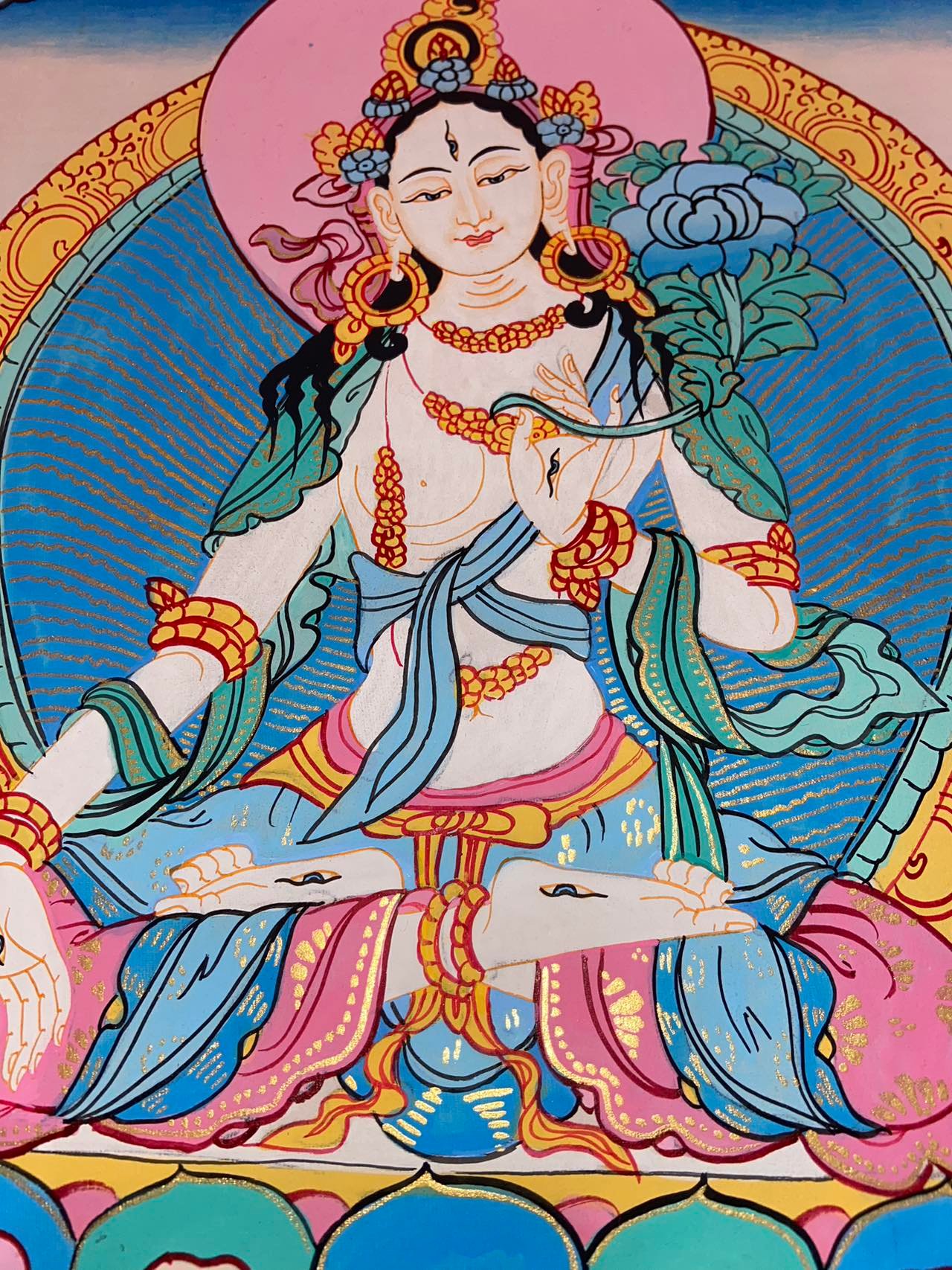


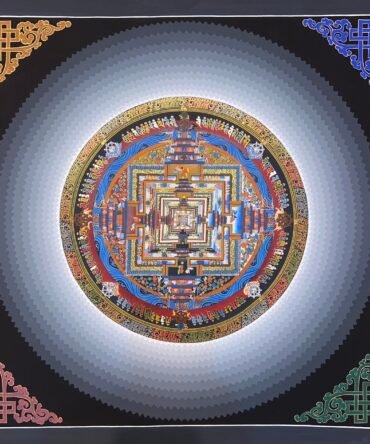
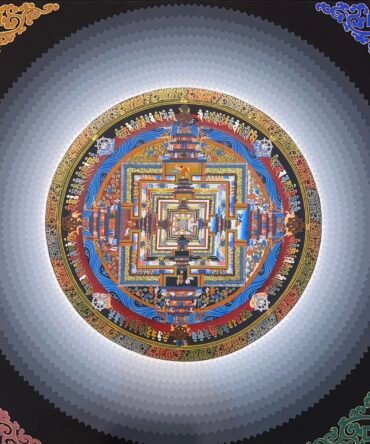
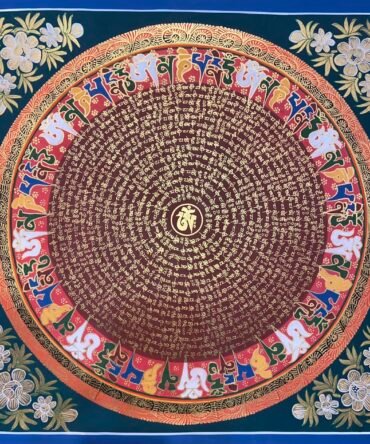

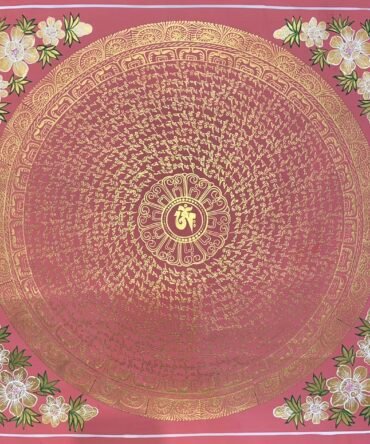
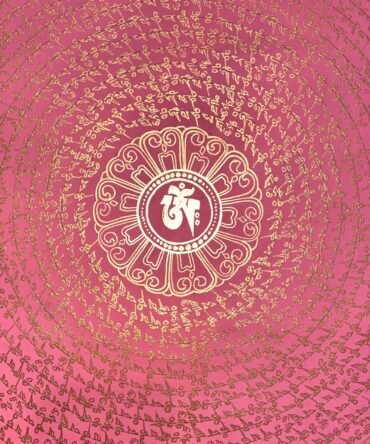


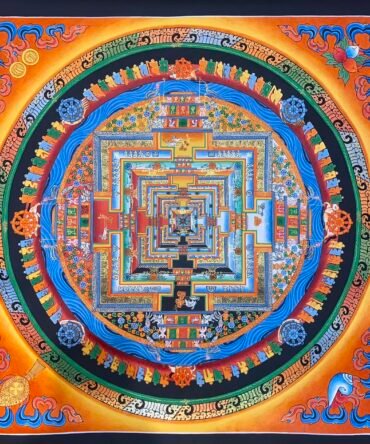

Reviews
There are no reviews yet.